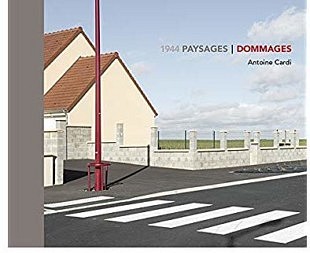1944 Paysages | Dommages by Antoine Cardi
14/12/2018
Rémi Coignet’s coup de coeur :
1944 Paysages | Dommages by Antoine Cardi
Antoine Cardi
Hardcover book half cloth
24 x 28 cm Italian style
96 pages,
31 color photographs
Texts by Annette Becker, Patrick Boucheron, historians and Antoine Cardi.
Trans Photographic Press
14/12/2018
 Photographing the postwar period has become a genre in itself. Representing traces of conflict, a topos known as English Aftermath Photography. The subject of Antoine Cardi is very clear: the Battle of Normandy from June to September 1944, one of the major episodes of the Second World War. Still, 1944 Paysages | Dommages escapes categorization. In these images, of war there is nothing to see.
Photographing the postwar period has become a genre in itself. Representing traces of conflict, a topos known as English Aftermath Photography. The subject of Antoine Cardi is very clear: the Battle of Normandy from June to September 1944, one of the major episodes of the Second World War. Still, 1944 Paysages | Dommages escapes categorization. In these images, of war there is nothing to see.4/12/2018
In partnership with The Eyes, the Goethe Institut of Paris invites you to an "Artist Talk" with the photographer Jessica Backhaus, whose exhibition...
31/10/2018
Discover Demeure by Amaury da Cunha, coup de coeur of our editor in chief Rémi Coignet.
2/11/2018
The Eyes organises la 3rd edition of The Artists Talks by The Eyes, at Paris Photo, from November 8th to November 11th
